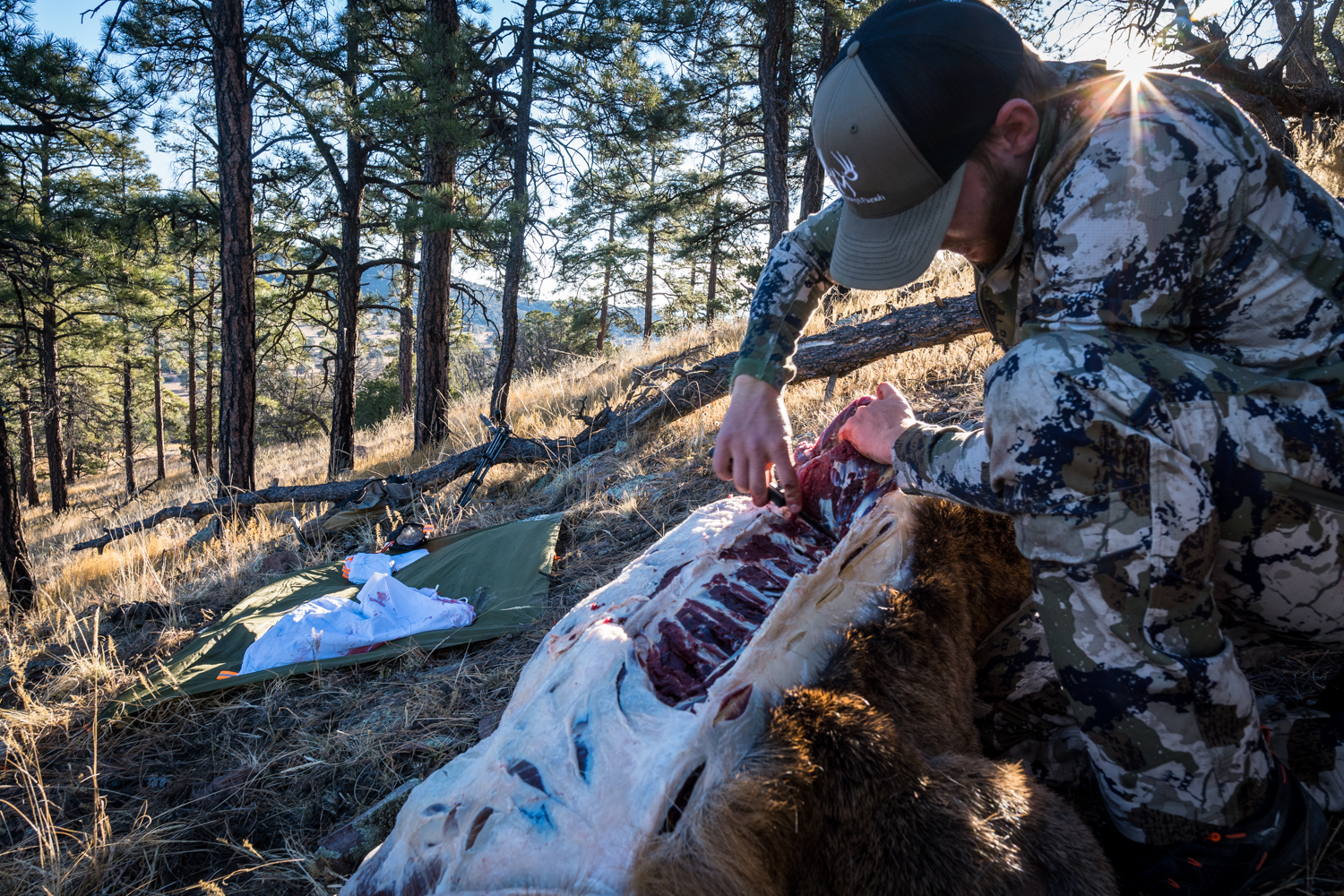Blog
Choosing Your Cuts After a Successful Elk Cut

After every great shot, the real work begins. Getting your elk from the field to the freezer is extremely rewarding. In the process, you will take some time to consider how the meat is portioned and butchered. If you butcher at home, there is plenty of time to work this in real-time.
Using a processor means you must think it through and make that decision at the drop off. Every person is different and knowing what you want and enjoy most will drive the decisions for cuts and processing.
Save Your Prime Cuts
You can grind, roast, jerky or steak out everything else but keep your prime cuts intact for steaks. The tenderloins are the most tender and delicious steaks off an elk. Next are the backstraps. Steaking the backstrap is a great idea, especially if you enjoy grilling or cast iron cooking steak. You can keep the backstraps in larger sections as well. This leaves the option to steak them out later or cook whole for groups. Regardless, it’s not common to break down the prime cuts into burger or anything else unless you have an overabundance from other hunts.
Hind Quarter Prime Roast Decisions
The decisions are a bit more difficult with the hind quarters. You have the sirloins and rounds that are excellent for steaks. These can also remain in large pieces to use as roasts. Much like the backstrap, you can also keep the roasts whole and make the decision to cook whole or steak them out later.
Front Shoulder Roasts and Neck Roasts
The front shoulders can be a bit tougher and have more sinew than the hind roasts. They still offer some nice cuts for slow cooking and even for steaks with some extra trimming. I like the front shoulders for taco meat, stews and for the grind pile.
The neck roasts contain more connective tissue and have excellent flavor, making them prime candidates for slow cooking. The meat is excellent but isn’t as tender as your hind roasts or prime cuts. I like these in the slow cooker or ground for burgers and sausage.
Shanks, Flanks and Rib Meat
I didn’t mention the shanks in the hind and front quarter segments. I used to strip them out and spend a ridiculous amount of time stripping off the sinew. Now, I either cut them with a sawzall for Osso Bucco or keep the sinew intact to save time. With a long slow cooker recipe, the sinew will dissolve, exposing the tender meat without all the extra fuss.
The flanks are great for carne asada style tacos. If that isn’t appealing, they do just fine in the grind pile. I strip the rib meat and grind it up as well. With plenty of ground, there is room for breakfast sausage, lean ground and ground with pork fat added to make burgers.
‹ Back



